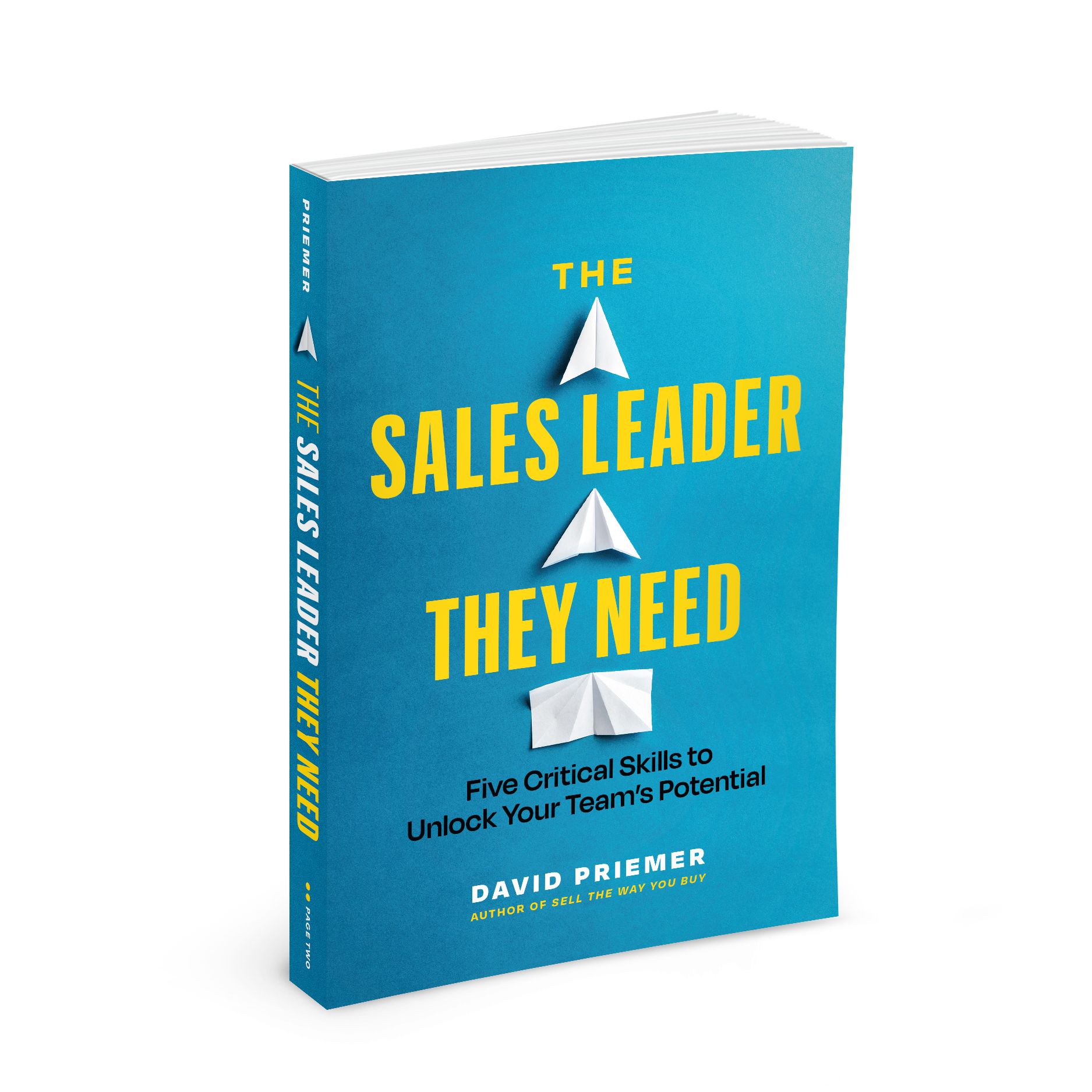How to Sell if You Hate Selling
In his memoir, Shoe Dog, Nike founder, and chairman, Phil Knight, talked about how he never liked selling. And it’s not hard to see why. In his bestselling book, To Sell Is Human, author Dan Pink conducted a survey where he asked people to state the first word that came to mind when they heard “sales” or “selling”. Of the 25 most offered words illustrated in the word cloud below, 80% had negative connotations.

That’s why many entrepreneurs, business leaders, and yes, even some salespeople cringe at the thought of having to “sell” their product or service.
This predominantly negative sentiment is often due to the unsavory experiences many of us have had with salespeople over the years. Encounters that left us feeling the seller was self-interested and manipulative or where they made us feel pressured and offered little value. And yet selling, the ability to communicate value and enthusiasm around our offering, is a necessary part of building any business.
But don’t fear! Modern selling isn’t all about getting people to sign on the dotted line. Here are a few tips for how to sell if you hate selling.
1. Lead with beliefs, not pitches
One of the reasons people may hate selling is because they feel that in order to sell effectively they need to arm themselves with a quiver of slick pitches and clever taglines. Words and marketing jargon designed to woo potential customers often delivered in an inauthentic way. Unfortunately, all too often the only thing these pitches succeed at doing is confusing buyers and making would-be sellers feel icky.
Despite his distaste for selling, Phil Knight was still very successful selling running shoes because, as he said, “It wasn’t selling. I believed in running. I believed that if people got out and ran a few miles every day, the world would be a better place… Belief is irresistible.”
So try this. Think about something you deeply believe in. Perhaps it’s a product, principle, or approach. For example, you might believe that starting your day at 5 AM is the secret to unlocking maximum productivity. You might believe that busy entrepreneurs should be able to run their businesses from their phones. Or you might believe that giving your family healthy, organic food shouldn’t cost more than regular food.
Why does articulating something we deeply believe feel so different than delivering a pitch?
The reason is simple. Conviction!
Conviction is a sentiment that sits at the intersection of ability, experience, and emotions. Not only is conviction the cornerstone of highly authentic messaging but it’s the equivalent of an armor-piercing bullet in the science of persuasion. As someone trying to sell a product or service, leading with a high conviction statement about what you believe (as it relates to your solution) will not only help convey your value to a target buyer but do it in a way that doesn’t make you feel gross!
If you’re looking for tips on how to craft a high-conviction belief statement unique to your business you can find instructions here and in the video below.
2. Tell more stories
Even if you’re armed with a set of high-conviction belief statements, selling doesn’t have to be all about carefully crafted messages. Conveying your enthusiasm and solution value while capturing your customer’s attention (particularly in your intro presentation) can be as simple as telling your customer a story. Stories and strategic narratives are highly effective selling tools for three reasons:
- Humans are preconditioned to storytelling: for much of our existence, human history and experiences were passed down from generation to generation through the use of stories. It was how we shared everything from our values to our favorite recipes. You might say the ability to assimilate stories is part of our DNA.
- Compelling stories are easy to tell and retell: features and bullet points can be tough to remember for both you and your customers. But stories are easy. This is especially important when your initial selling conversations are not with the ultimate decision-maker. If your customer contact needs to share your solution with other people within their organization, a story is a much easier way to relay your value proposition without loss of impact than a marketing message.
- Stories generate an emotional response: In his best-selling book Story: Substance, Structure, Style, and the Principles of Screenwriting, award-winning writer and director, Robert McKee argues that stories “fulfill a profound human need to grasp the patterns of living—not merely as an intellectual exercise, but within a very personal, emotional experience.” This emotional experience is critical because modern neuroscience has shown that feelings consistently trump logic when it comes to decision-making.
In short, stories are fun to tell, compelling to hear, and generate the emotional response critical to converting customers in ways pitches never can. Looking for a simple recipe to help you craft a story around your solution? Try this secret infomercial formula.
Helpful resource: How to Craft a Killer Intro Presentation
3. Create content to sell for you
In the modern area, the best salespeople are the ones who see selling as a genuine way to help other people. And genuinely helping is an act of kindness that never makes you feel gross or sleazy. So if you’ve learned something valuable during the course building your business, delivering amazing virtual presentations, or solving a key challenge for your target customers, why not help others by sharing? With all the incredible (and in most cases, free) technology available to us today, memorializing your insights in a simple blog post or helpful photo or video has never been easier.
As I’ve mentioned in the past, helpful content can act as a lightning rod, connecting you with an audience of like-minded customers. It helps you build a community for your solution at scale. The trick when it comes to creating content is for it to actually be helpful. Your content should add legitimate value to your target audience without feeling like a commercial for your product or a thinly veiled product pitch.
Back at Salesforce, our teams did this consistently for the small business segment we serviced. After all, even though we were a 16-year-old, $8B company at the time, we were once small and had learned some key lessons along the way (and our customers wanted to know what they were!). Amazing companies like Hubspot are equally known for the extensive value their free, online resources provide. And it shouldn’t surprise you to learn that my book, blog and YouTube channel serve the same purpose for me.
Looking for an easy way to get started? Simply write down some of the key lessons you’ve learned along your journey and share them with your audience. For example,
- have you seen clients consistently stumble on the same issues as they implement a solution like yours?
- Do you have insightful tips to help people get started along a difficult path?
- Do you have data or other compelling evidence that may cause your audience to rethink their current approach to something?
From there, craft bite-sized messages or pieces of content to share your wisdom on as many channels as you can.
From entrepreneurs to business and thought-leaders, regardless of our titles, these days many of us find ourselves in a sales or selling role. If the idea of selling makes you uneasy, these tips should help you amp up your persuasive power while keeping your conscience in check!
We promise never to send you junk or share your email! Just helpful sales insights.














This is awesome advice – many people have a sort of visceral reaction to selling. Somehow it can make a person feel cheap or cheesy even if one feels good about what the product/service is. Leading with belief and backing up that belief with stories helps remove that feeling and instills the speaker with confidence.
Thanks David!